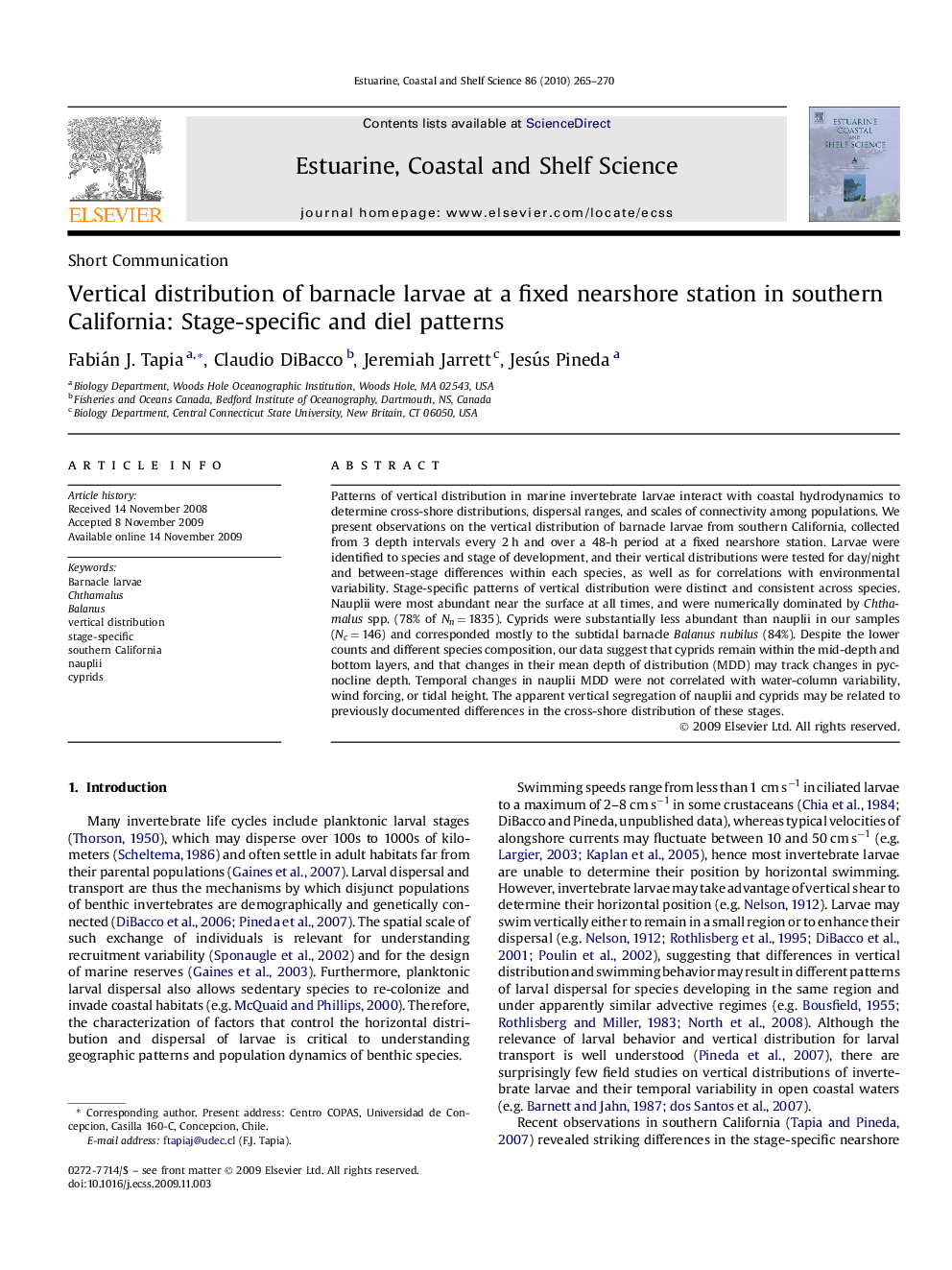| کد مقاله | کد نشریه | سال انتشار | مقاله انگلیسی | نسخه تمام متن |
|---|---|---|---|---|
| 4541037 | 1326704 | 2010 | 6 صفحه PDF | دانلود رایگان |

Patterns of vertical distribution in marine invertebrate larvae interact with coastal hydrodynamics to determine cross-shore distributions, dispersal ranges, and scales of connectivity among populations. We present observations on the vertical distribution of barnacle larvae from southern California, collected from 3 depth intervals every 2 h and over a 48-h period at a fixed nearshore station. Larvae were identified to species and stage of development, and their vertical distributions were tested for day/night and between-stage differences within each species, as well as for correlations with environmental variability. Stage-specific patterns of vertical distribution were distinct and consistent across species. Nauplii were most abundant near the surface at all times, and were numerically dominated by Chthamalus spp. (78% of Nn = 1835). Cyprids were substantially less abundant than nauplii in our samples (Nc = 146) and corresponded mostly to the subtidal barnacle Balanus nubilus (84%). Despite the lower counts and different species composition, our data suggest that cyprids remain within the mid-depth and bottom layers, and that changes in their mean depth of distribution (MDD) may track changes in pycnocline depth. Temporal changes in nauplii MDD were not correlated with water-column variability, wind forcing, or tidal height. The apparent vertical segregation of nauplii and cyprids may be related to previously documented differences in the cross-shore distribution of these stages.
Journal: Estuarine, Coastal and Shelf Science - Volume 86, Issue 2, 20 January 2010, Pages 265–270